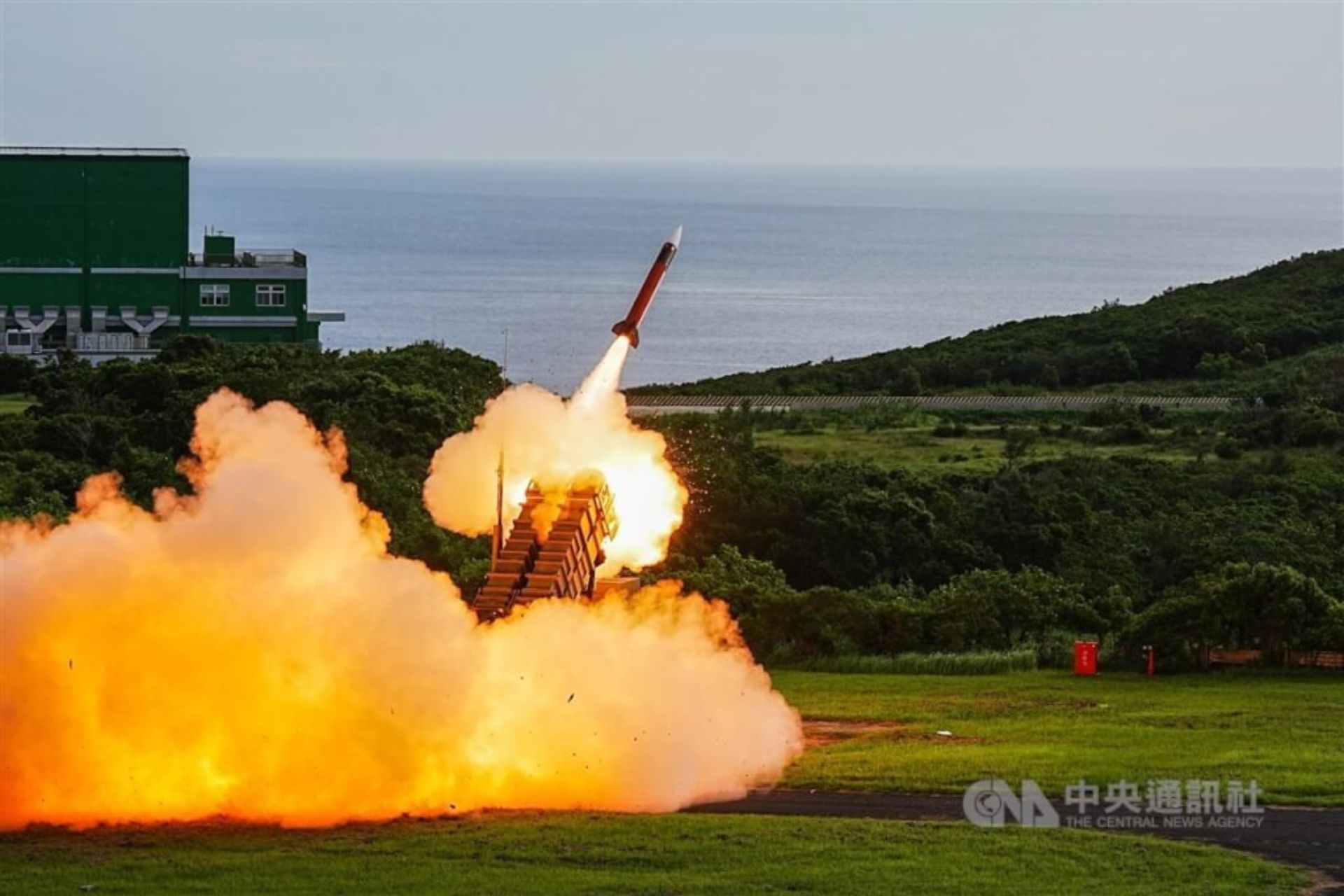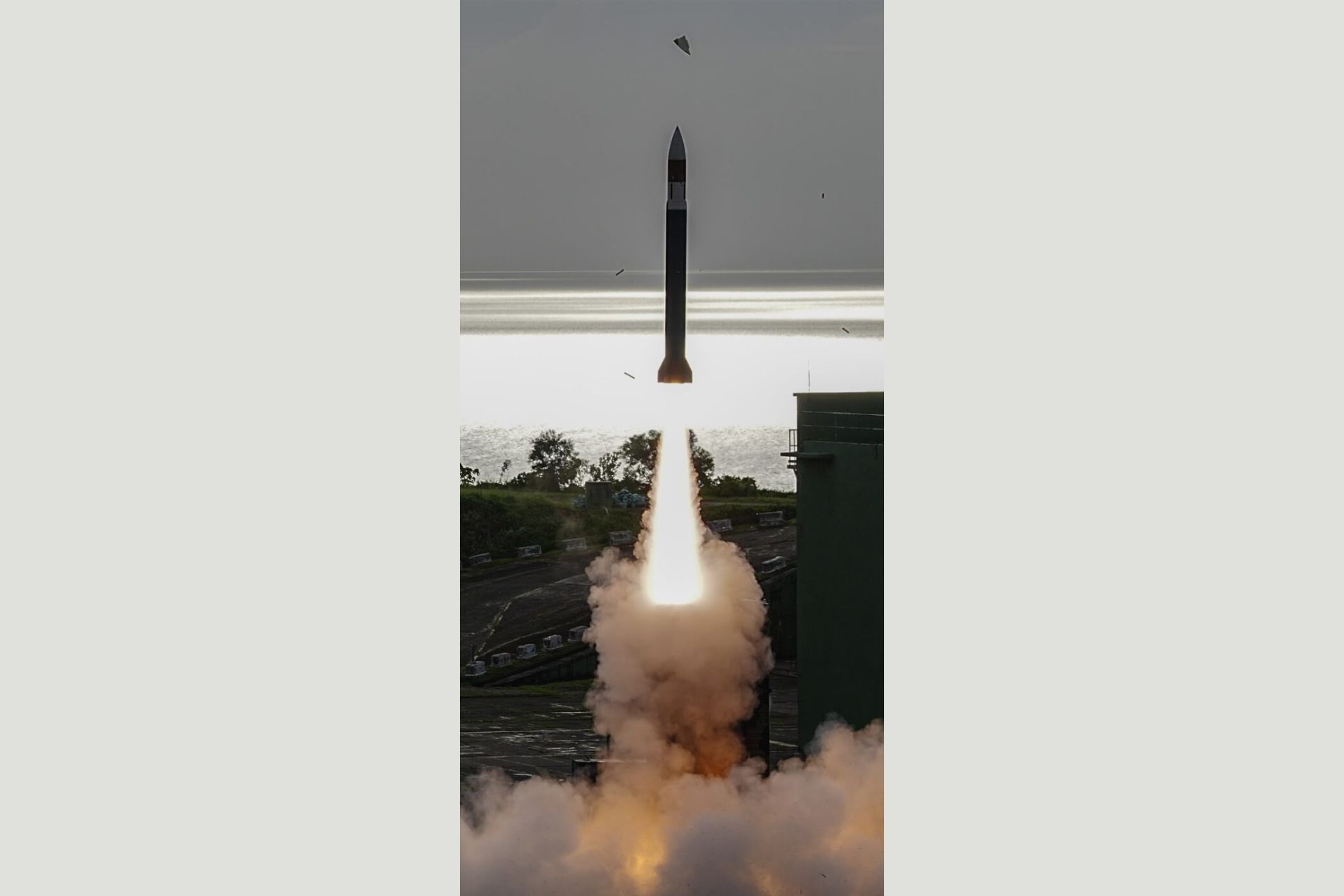Breaking News
Rare Public Display of Taiwanese Missile Power with Sky Bow III and US Patriot PAC-II.
On August 20, 2024, the Taiwanese military demonstrated its advanced missile capabilities in a rare public display of its precision weaponry. The demonstration included the firing of the indigenous Tien-Kung III (Sky Bow III) surface-to-air missile and U.S.-made Patriot PAC-II surface-to-air missiles. These exercises, conducted at the Jiupeng Base in Manzhou Township, southern Pingtung County, marked a significant event as the military allowed media access to the drills.
Follow Army Recognition on Google News at this link

The Tien-Kung III (Sky Bow III) is an Indigenous Taiwanese surface-to-air missile system developed by the National Chung-Shan Institute of Science and Technology (Picture source: CNA)
During the morning exercises, two PAC-II missiles and one Sky Bow III missile were successfully launched, hitting their respective target drones. The precision of these missiles highlighted Taiwan's defense capabilities amid growing regional tensions. The decision to make these exercises public is noteworthy, as the Taiwanese military generally keeps such activities confidential, with the last similar event occurring in 2012.
The Taiwanese military employs the Patriot PAC-II system, a U.S.-manufactured surface-to-air missile system, as part of its air and missile defense capabilities. Taiwan first acquired the Patriot system in the 1990s, with the PAC-II variant entering service to bolster defense against potential aerial threats, particularly from mainland China. The Patriot PAC-II is designed to engage various targets, including aircraft, tactical ballistic missiles, and cruise missiles, using a Track-Via-Missile (TVM) guidance system and an enhanced fragmentation warhead.
Taiwan currently deploys several Patriot PAC-II batteries, although the exact numbers are not publicly disclosed. This system is a critical component of Taiwan's air defense strategy, providing a layered defense network alongside other indigenous missile systems. The PAC-II's capability to engage ballistic and cruise missiles strengthens Taiwan's defensive posture, particularly in response to the growing missile capabilities of neighboring countries. The system has been upgraded over time to maintain its effectiveness in modern conflict scenarios.
The Tien-Kung III (Sky Bow III) is an Indigenous Taiwanese surface-to-air missile system developed by the National Chung-Shan Institute of Science and Technology (NCSIST). It was designed as an advanced air defense system capable of intercepting high-altitude aircraft, ballistic missiles, and cruise missiles. Development began in the early 2000s, with production starting in 2011. The Sky Bow III entered service with the Taiwanese military around 2015 and has since become a key component of Taiwan’s layered air defense network.
The Sky Bow III system features enhanced radar tracking, a solid-fuel rocket motor, and can engage multiple targets simultaneously at a range of up to 200 kilometers. Although the exact number of units in service is classified, the system is deployed at multiple strategic locations across Taiwan. The Sky Bow III offers significant improvements over its predecessors, providing higher accuracy and faster reaction times, making it a crucial element in Taiwan's defense strategy against potential aerial threats.
The Tien-Kung III (Sky Bow III) system is notable for its versatility and its ability to engage a wide range of threats, including aircraft, cruise missiles, anti-radiation missiles, and short-range tactical missiles. Additionally, the system can launch older missile variants within the TK family, such as the TK I and II missiles, enhancing Taiwan's defensive flexibility.

The complementarity between the Tien-Kung III (Sky Bow III) and the Patriot PAC-II lies in their ability to cover a wide range of aerial and ballistic threats, providing a multi-layered defense for Taiwan (Picture source: CNA)
The TK III system operates alongside the U.S.-acquired Patriot system and serves as a vital component of Taiwan's low-altitude air defense network, as highlighted by the National Chung-Shan Institute of Science and Technology's website. This collaborative approach between indigenous and U.S.-acquired systems underscores Taiwan's commitment to strengthening its national security and defense in the face of regional challenges.
The complementarity between the Tien-Kung III (Sky Bow III) and the Patriot PAC-II lies in their ability to cover a wide range of aerial and ballistic threats, providing a multi-layered defense for Taiwan. While the U.S.-acquired Patriot PAC-II excels in intercepting medium-range ballistic missiles, the locally developed Tien-Kung III is versatile enough to engage not only ballistic missiles but also aircraft, cruise missiles, and anti-radiation missiles. Together, these two systems create a synergy that enhances the resilience of Taiwan's air defense by allowing coverage at different altitudes and ranges.
This technological collaboration between an indigenous system and foreign technology ensures Taiwan has a robust and flexible defense capability in response to growing regional threats.
In addition to the publicized exercises, local media speculated that the military may have also conducted a test of the extended version of the Hsiung Feng II-E, or "Brave Wind II-E" missile. This surface-to-surface cruise missile reportedly has an extended range of 1,200 kilometers, potentially reaching inland provinces of China. However, this part of the exercise was not confirmed or shown to the media.
Military spokesman Sun Li-fang neither confirmed nor denied the test of the Hsiung Feng II-E but emphasized that all live-fire drills were conducted according to the military’s annual plan. Sun stated that due to the sensitive nature of some of the missiles tested, the military would refrain from commenting on the specific types used during the exercises.
The Jiupeng Base, a key site for Taiwan's military and the National Chung-Shan Institute of Science and Technology (NCSIST), has been used for decades for missile tests and other advanced military exercises. The decision to allow media access to this recent missile drill is a rare event, reflecting the importance of the exercise in Taiwan's overall defense strategy.


























